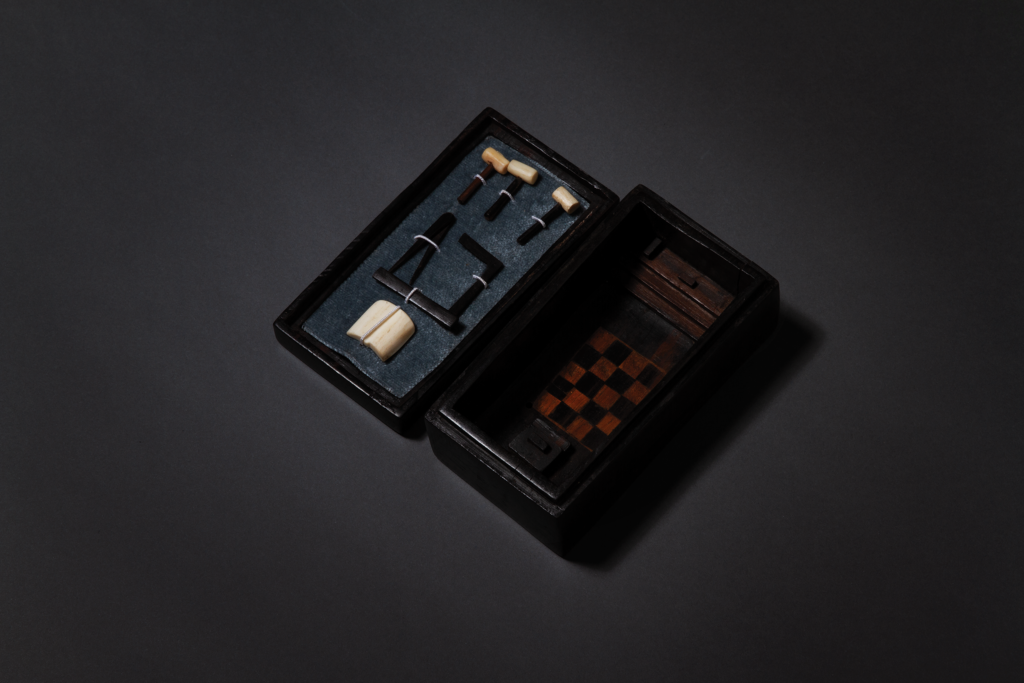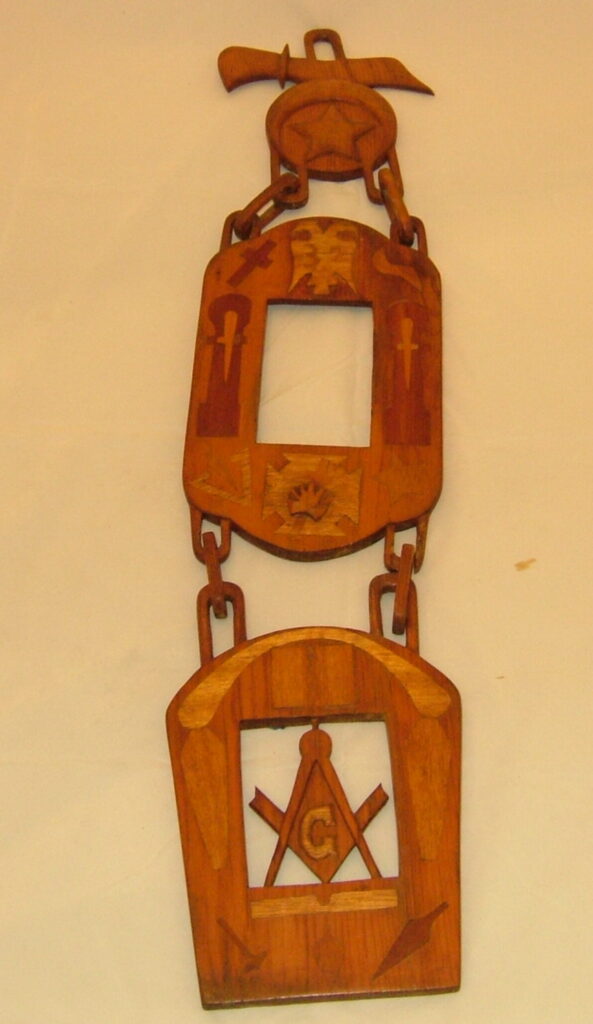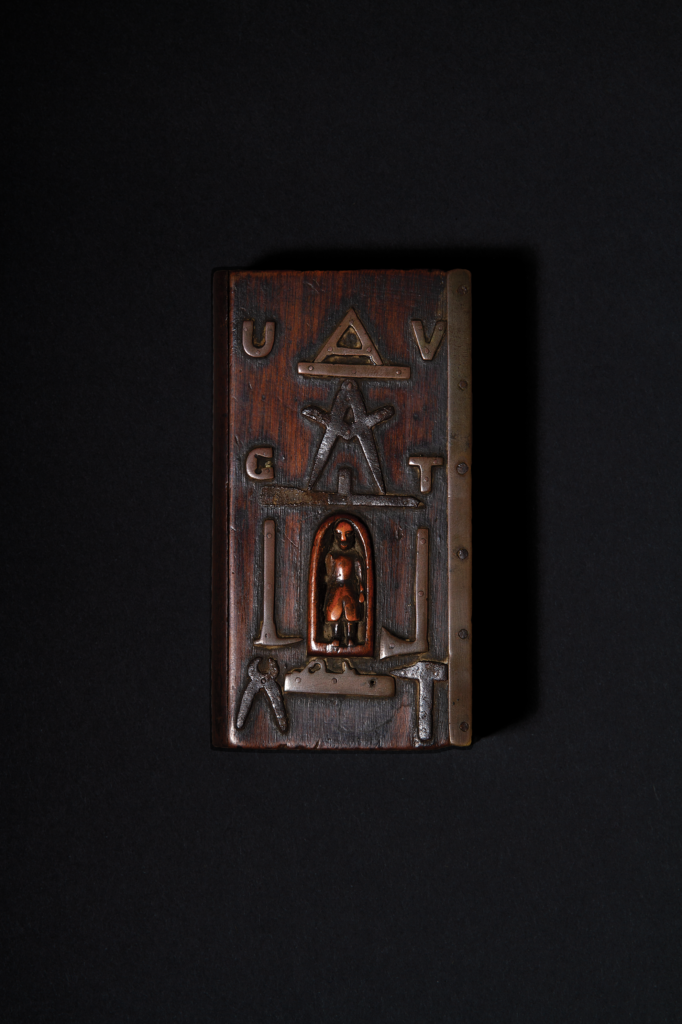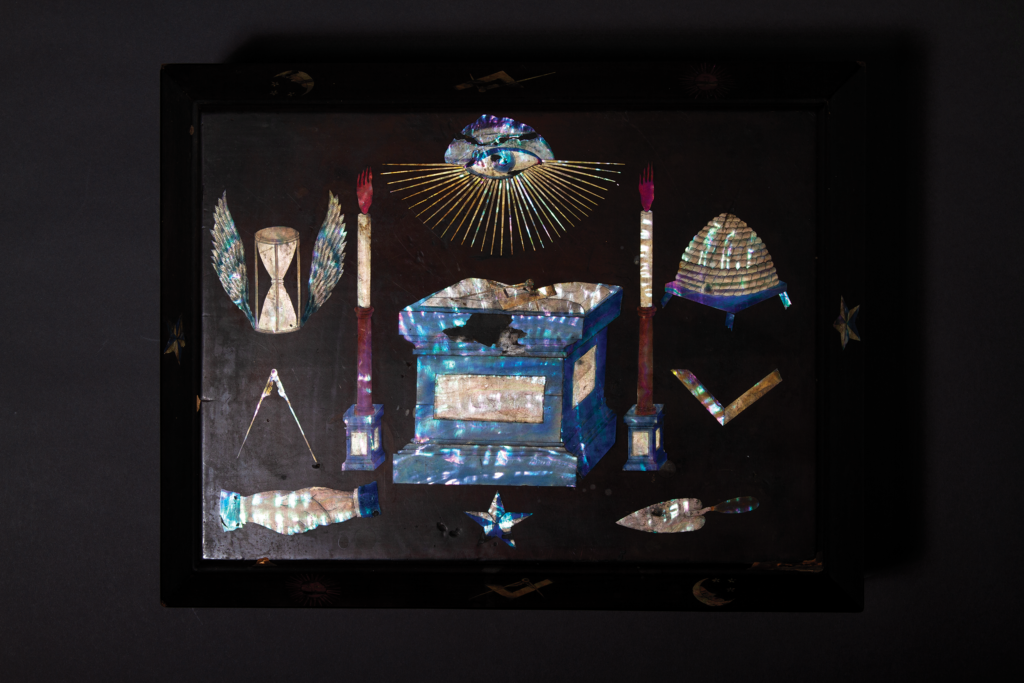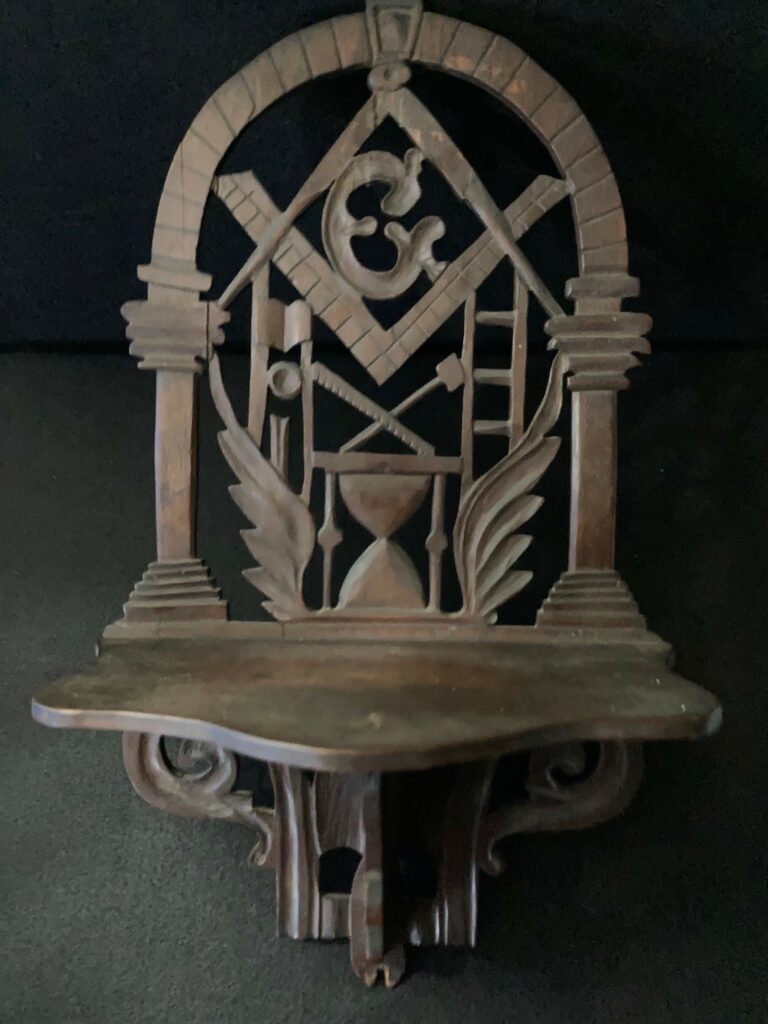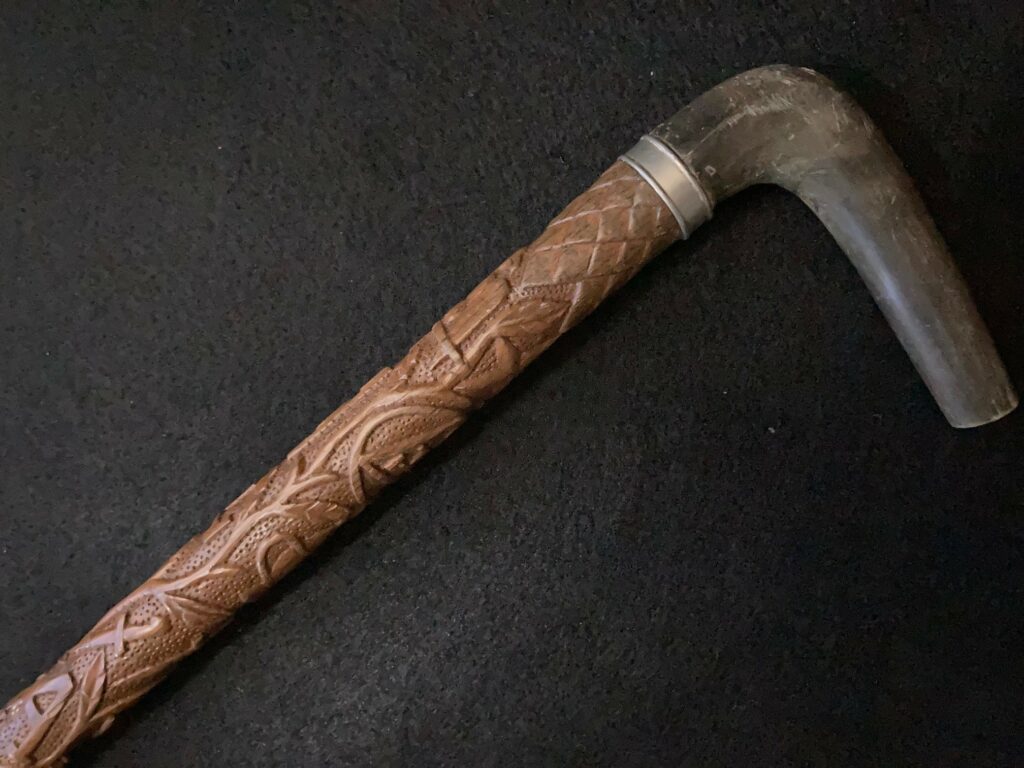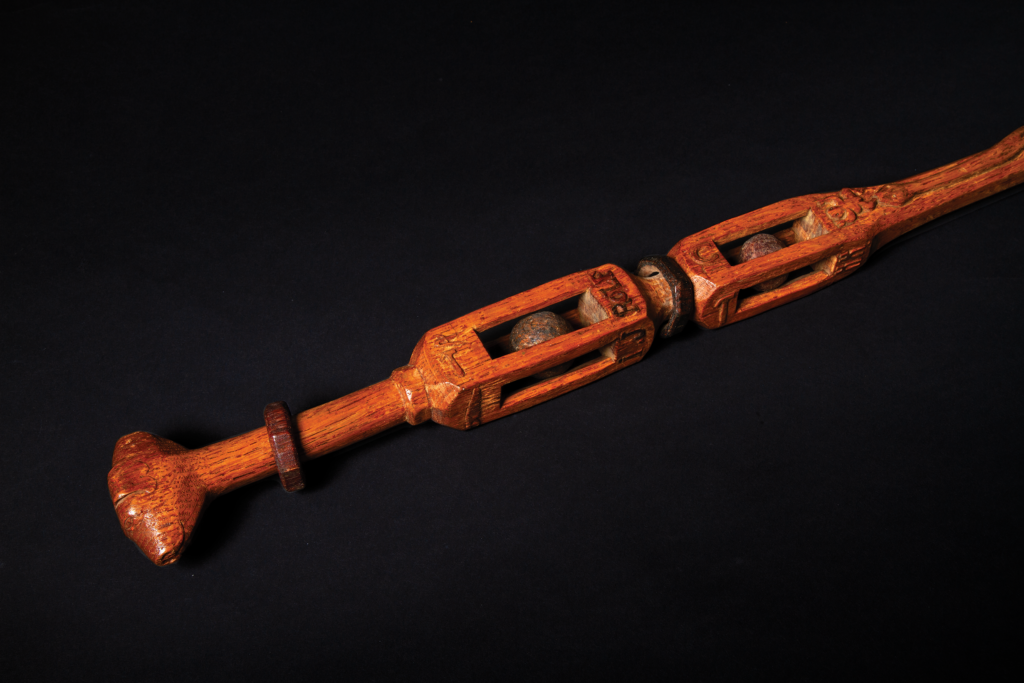
01
Master Wall Hanging | Circa 1920-1960
Wood | 8″ diameter
Acc# 96.17.1
The round wooden wall hanging of a square and compass with “G” in the center is typical of small wood working craft pieces from the middle of the 20th century. Considered a form of sculpture, these pieces are often made for the maker’s own pleasure and that of his Masonic community.

